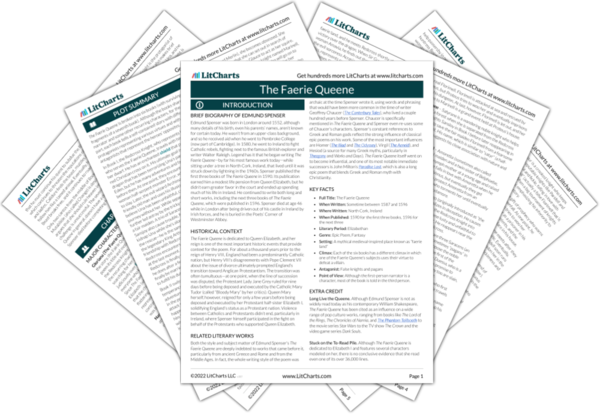The giant with a scale is a clear representative of the political idea of populism (a broad ideology that typically favors “common people” over monarchs, aristocrats, or other elites). Since the poem is dedicated to the monarch Queen Elizabeth, populism clearly is not a political stance that would be portrayed favorably in it.
